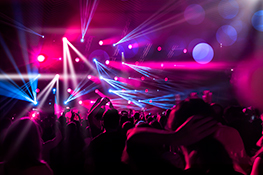Choosing the Right LED PAR for Your Venue: A Guide to Size, Power & Beam Angle
Understanding LED PAR Lights: A Versatile Choice
LED PAR (Parabolic Aluminized Reflector) lights have become a staple in stage lighting, offering a blend of energy efficiency, vibrant color rendering, and ease of use. Their versatility makes them suitable for a wide range of applications, from small intimate gigs to large-scale concerts and theatrical productions. But with so many options available, selecting the perfect LED PAR for your specific needs can feel overwhelming. This guide will break down the key factors to consider: size, power, and beam angle.
Size Matters: Choosing the Right Housing
LED PAR cans come in various sizes, typically categorized by their housing diameter (in inches). Common sizes include 6”, 10”, 12”, and even larger formats. The size you choose directly impacts its throw distance, light output, and overall weight.
* Smaller PARs (6”): Ideal for smaller venues, accent lighting, or creating washes in confined spaces. Their compact size allows for flexible positioning and easier rigging.
* Medium PARs (10”): Offer a good balance between throw distance, output, and portability. They are a popular choice for a variety of settings.
* Larger PARs (12” and up): These provide greater light output and throw distance, making them suitable for larger venues, outdoor events, and applications requiring significant coverage. Their larger size also increases weight and may require more robust rigging solutions.
Power Consumption and Lumens: Illuminating the Numbers
LED PAR lights are specified by their power consumption (in watts) and luminous flux (measured in lumens). Higher wattage generally means brighter output, but also increased power consumption and heat generation. Consider the following:
* Wattage: Understand the balance between brightness and energy efficiency. While higher wattage provides more lumens, it increases energy costs and may require more efficient cooling systems.
* Lumens: This indicates the total amount of visible light emitted. Higher lumen output means a brighter light source, suitable for illuminating larger areas or compensating for ambient light. Compare lumen output across different models within the same wattage range to assess efficiency.
* Power Supply: Determine if you need AC or DC power and select units accordingly.
Beam Angle: Shaping Your Light
The beam angle is crucial for controlling the spread of the light. It’s measured in degrees, with narrower angles producing concentrated beams and wider angles creating a softer wash.
* Narrow Beam Angles (10-25°): These create a focused, intense beam ideal for spotlighting specific areas or creating dramatic effects. They have a longer throw distance.
* Medium Beam Angles (25-45°): Offer a good compromise between throw distance and coverage, suitable for a wide range of applications.
* Wide Beam Angles (45°+): Produce a broad, even wash of light, perfect for illuminating larger areas or creating ambient lighting.
Choosing the right beam angle is critical for achieving your desired lighting design. Consider the size of your venue and the type of lighting effect you want to create.
Choosing the Right LED PAR: A Summary
Selecting the appropriate LED PAR requires careful consideration of size, power, and beam angle. By understanding the interplay of these factors and considering your venue’s specific requirements, you can choose the perfect lighting solution to enhance your stage productions and events. Remember to factor in budget, available power, and rigging capabilities when making your final decision. Browse our range of high-quality LED PAR lights at stagelights.in to find the perfect fit for your needs.


 Auditorium Construction Services
Auditorium Construction Services 